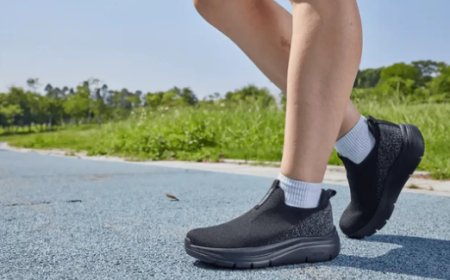Why Bottom Wipers Are Essential for Elderly and Disabled Care
Caring for the elderly or individuals with disabilities involves attending to their physical, emotional, and hygienic needs with respect and dignity. Among the many aids that have been developed to enhance independent living, bottom wipers have become an indispensable tool. These assistive devices are designed specifically to help individuals who have limited mobility or strength in their arms, hands, or back allowing them to clean themselves effectively after using the toilet without needing help from a caregiver.
The benefits of bottom wipers go far beyond just convenience; they promote personal hygiene, enhance self-esteem, and reduce the burden on caregivers. For those interested in these products, you can find a high-qualityBottom Wiperat Better Care Market.
Preserving Dignity Through Independence
One of the most significant challenges elderly or disabled individuals face is the loss of independence in performing basic daily tasks. Among these, maintaining personal hygiene after toileting is deeply private and personal. Relying on others for such tasks often leads to feelings of embarrassment, helplessness, or even depression.
A bottom wiper allows users to manage their own hygiene discreetly and with confidence. This seemingly small improvement can have a major psychological impact, helping individuals regain a sense of control over their lives and bodies.
Addressing Physical Limitations
As we age or deal with physical impairments, everyday tasks can become increasingly difficult. Limited range of motion, arthritis, back pain, or post-surgical recovery can make twisting, bending, or reaching nearly impossible.
Bottom wipers are thoughtfully designed with extended handles and ergonomic grips, enabling users to reach behind comfortably without straining themselves. For individuals who struggle with stiffness, tremors, or weak grip strength, the secure design offers a stable and easy-to-use alternative to standard toilet paper usage.
Reducing Risk of Injury
When mobility is compromised, even routine movements can lead to injury. Reaching behind to wipe can cause individuals with balance issues to fall or overextend, resulting in sprains or fractures. The bathroom is already one of the most hazardous areas for seniors, so reducing unnecessary movement is key to injury prevention.
Bottom wipers serve as an extension of the user's hand, requiring minimal movement and drastically reducing the risk of falls or strain. For caregivers, this means less hands-on assistance and a safer environment overall.
Promoting Hygiene and Health
Proper cleaning after using the toilet is crucial in preventing infections, especially urinary tract infections (UTIs), skin irritation, or pressure sores. These conditions are more common in elderly or immobile individuals who may not be able to clean themselves thoroughly.
A good-quality bottom wiper helps ensure complete and hygienic cleaning, even in hard-to-reach areas. Many designs accommodate both toilet paper and moist wipes, making them versatile for different cleaning preferences. By improving access and effectiveness, these tools contribute significantly to overall health.
Ease of Use and Maintenance
Modern bottom wipers are designed with user-friendliness in mind. Many models feature a spring-loaded or locking mechanism to hold toilet paper or wipes securely in place. Once cleaning is done, the used tissue can be released with a simple push of a button, eliminating the need for direct contact.
These devices are also lightweight, portable, and easy to clean, making them ideal for home use or even while traveling. Their discreet design ensures they can be stored easily and used without drawing attention, offering both practicality and privacy.
Supporting Caregivers
Caregiving is a demanding and often underappreciated role. Assisting someone with toileting can be physically and emotionally draining. Bottom wipers help reduce caregiver workload while also allowing individuals to perform personal tasks on their own.
This dual benefit strengthens the caregiver-patient relationship by reducing awkward or uncomfortable interactions. It also allows caregivers to focus on other essential care areas, improving efficiency and well-being on both sides.
Versatile Solutions: Pairing With Portable Hygiene Aids
Bottom wipers can be even more effective when used alongside other hygiene aids such asPortable Bidet Australia. These compact bidet systems allow users to cleanse with water, which is gentler on sensitive skin and more hygienic than wiping alone.
The combination of a bottom wiper and a portable bidet offers an elevated standard of personal care, especially for individuals with chronic conditions like hemorrhoids, incontinence, or post-operative wounds. These tools work together to ensure that personal cleaning is thorough, easy, and dignified.
Encouraging Long-Term Use and Acceptance
Some elderly or disabled individuals may initially resist using a bottom wiper due to unfamiliarity or stigma. However, once introduced in a respectful and positive manner, many users quickly appreciate the sense of freedom it provides.
Education and demonstration can play a key role here. Showing how the device works and emphasizing its benefits helps overcome resistance. Often, it just takes a few successful uses for individuals to become comfortable and even dependent on this helpful aid.
Cost-Effective Long-Term Solution
Investing in a bottom wiper may seem like a small decision, but it has long-term economic value. When individuals can manage toileting on their own, the need for round-the-clock personal care decreases. This can significantly lower homecare costs or delay the need for assisted living services.
Moreover, by preventing infections and reducing the risk of falls or injuries, these devices contribute to fewer medical interventions and hospital visits, which can be financially and emotionally draining for families.
A Crucial Step Toward Inclusive Living
Accessibility tools like bottom wipers are more than just products they represent progress in inclusive design. As society becomes more aware of the needs of differently-abled individuals and seniors, assistive devices are gaining recognition for their role in supporting independent living.
By making these tools widely available and easy to use, we help create a world where aging or disability doesn't mean loss of dignity or dependence. Everyone deserves the right to clean themselves, care for their bodies, and live comfortably in their own homes.
Conclusion
In the realm of elderly and disabled care, small innovations often yield the biggest impacts. Bottom wipers exemplify this perfectly they restore a sense of independence, maintain hygiene, support caregivers, and improve quality of life in a profoundly simple way.
Whether used after surgery, during age-related decline, or in permanent physical conditions, these devices provide comfort, dignity, and safety. When paired with additional hygiene tools like portable bidets, the results are even more comprehensive and beneficial.
Its time to normalize the use of assistive devices that empower individuals, rather than allowing shame or stigma to prevent their adoption. Bottom wipers arent just tools theyre a gateway to living with independence and grace.











































